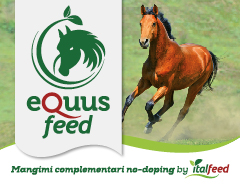
Not everyone will embrace moves to open up the sport beyond the affluent audiences typically associated with the sport.
“A lot of people probably quite like the fact they know certain things a lot of the general public does not know,” Bazalgette said. “We want to engage the wider part of the audience who are there for a good day out, for whom racing is part of the theater of the day, but perhaps they are not really engaging with it as a sport.”
Although horse racing is Britain’s second biggest spectator sport after football, the Jockey Club believes that around 80% of race-goers have little or no knowledge about just what they are seeing. Although a good day out for boozing and gambling, many do not necessarily understand why a particular horse is worth a bet or the difference between flat and jump racing.
The seven short films, which were inspired by explainer videos at 2012 London Olympic venues and produced by the same company, are all silent so as not to intrude on the atmosphere.
“We don’t want the old hands to feel sniffy about it,” Bazalgette said, of the videos.
But it is hoped the videos will provide a better understanding of the sport and boost revenue by encouraging more frequent visits from casual spectators, and then keeping them engaged through the year.
What the course videos do not address is the issue that turns some off the sport: why horses are often put down after sustaining injuries during races. The rights group Animal Aid has listed 144 on-course deaths so far in 2014 on its website.
“People don’t understand when we are looking after horses if they get injured on the racetrack, there is no economics involved in it; it’s purely the welfare of the horse,” Bazalgette said, discussing a welfare issue that does feature on the accompanying “Racing Explained” website. “Unfortunately because of the way (horses) are built they can’t always be looked after the way one would like to.”
Having already captured the champagne and oysters set, the Jockey Club says “Racing Explained” is about engaging the beer and burger fans, who can feel like second-class spectators who can’t fully comprehend the dynamics of the sport.
Although Bazalgette now heads The Jockey Club and owns horses, he has not always been so engaged with the racing.
“I would love it when someone took me, and then forget about it until the next time someone invited me,” he said.
http://www.bloodhorse.com/
Actualités  Internationales
Internationales  British Racing Undertakes Education Program
British Racing Undertakes Education Program




